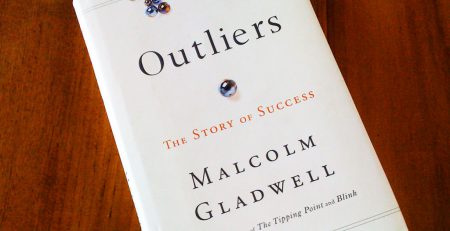Experiential Gamification BML Munjal
School of Management – BML Munjal University
Experiential Teaching and Learning @ School of Management BML Munjal University
Key inspiration behind the initiative
In the days of yore, the source of knowledge for students across universities and schools was rather limited. Students either had to listen patiently to the professor in class or read the text books and references or had to spend time physically in the library. With the advent of web based technologies, smart devices and the internet, the above constraint has been turned on its head. Answers (whether good or bad) are now available at the click of a button. This information revolution has impacted the education world as a whole with the millennial generation actively seeking instant gratification to their curiosity.
Apply Now to BML Munjal University
However, at the same time, several industry reports point out that many of today’s graduates have lower employability. For instance, in India alone, the ratio of employable to unemployable graduates is 20:80 which is concerning. Many experts point out that the (lack of) ability to apply the knowledge gained at haloed academic institutions is one major Achilles ‘heel in securing or sustaining a placement. Our firm belief at the School of Management in the BML Munjal University is that how we impart learning needs to change, needs to become more student centric and should get the student as well as faculty equally involved in the process of learning and knowledge facilitation. As a progressive, forward-thinking school, we believe that the new crop of students require a very different pedagogical approach which is much more hands-on and experientially driven rather than a mere one-way delivery of knowledge.
Experiential learning is defined as a process whereby knowledge is created through the transformation of experience in a particular context. Notwithstanding the many advantages of traditional teaching, research has shown that incorporating experiential learning in the pedagogy augments overall learning, builds reflection and enhances decision making capabilities. Well-designed experiential learning environments contain pedagogical elements that help the student explore, navigate, and comprehend more information about a dynamic system that cannot be obtained through the process of being passive listeners in class. It also improves student-professor interactions as the faculty now assumes the role of a master facilitator where learning is generated within the group through a symbiotic and engaged process.
Innovations done by BML Munjal University
Creative Visualization of Practice
The School of Management at the BML Munjal University designs hands-on activities, using easily available materials like Lego® building blocks, die cast toys, Chinese puzzle Tangram, Origami, Waste papers, disposable cups etc. to create in class visualization of management practice. Two such initiatives are briefed below.
Designing Service Layouts and Blueprints
Service blueprinting is a technique originally used for service design and innovation, but has also found applications in diagnosing problems with operational efficiency. The activity conceptualized to teach service blueprinting to final year MBA students in their service marketing elective utilized Lego® building blocks, die-cast toys, chart papers and coloring pens. The experiential activity was intended to teach the concepts of service blueprinting, service delivery process, failure and waiting points, checklists, and total quality management. The class was divided into small teams and each team was assigned the task of designing a service layout and the corresponding blueprint for any of the four different service settings viz. airport, railway station, zoo and car servicing. The resources required to design each of these setups were made out of Lego bricks and were put to display at the individual team workstations. Each Lego installations, and die cast toys represented a tangible element of the actual service setting. The teams brainstormed to build the entire service facility layout with the resource materials provided to them. The students were also asked to indicate the waiting and failure points within the service layout. Those teams, which innovatively designed the blueprint that minimized the failure and waiting points, were scored higher.
Understanding Costing: The Smart Bucket Exercise
The Smart Bucket venture is a classroom exercise wherein the students manufacturing a smart bucket which has a very special fibre with an inbuilt thermostat and changes the temperature of the water, to temperature conducive to our body. Waste papers, disposable cups and some easily available stationaries were used to create these smart bucket proxies. The primary objective of this exercise is for students to determine cost and selling price of the bucket and to prototype manufacturing the same. The exercise is conducted in the costing capstone course for the first year MBA students. The class is segregated into teams and each team is provided with the raw materials at a specific cost to create the smart bucket proxies given a particular demand scenario. The teams are advised to be conscious of the cost structure involved from the very beginning. Following the manufacturing events, the teams go by cost plus mark-up method of deciding their selling price, ensuring that it becomes the target price for other entrants in the market. Indeed several worksheets were provided to the teams to understand cost breakups and arrive at a decision. Through the activity the students not only understand cost behaviour but also price dynamics in a competitive market.
Role play and Prototyping
Prototyping, a seemingly complex phenomena is often considered to be the crux of the design thinking process and an integral part of implementing experiential learning. At School of Management, BMU in several courses such initiatives are taken. Faculty members in house take constant part in designing activities that involve advanced role-plays and creating simulated market scenarios. Two such instances are follows.
The Furniture Market: Sales and Service
The activity is conducted as a part of various Marketing related courses at the School of Management to teach customers’ role in service delivery and its impact on quality. The materials used for this activity were Chinese puzzle “Tangram” sets, post-it strips, display boards and some proxy money. The tangram is a 400-year-old Chinese dissection puzzle consisting of seven flat shapes, called tans, which are put together to form different shapes. The objective of the puzzle is to form a specific shape (given only an outline or silhouette) using all seven pieces, which must not overlap. The class was divided into two groups, individual customers and furniture retailer teams. The retailers provided the customers with printed tangram patterns as a proxy for furniture designs and a tangram set to assemble. The designs were of different difficulty levels and priced differently. The customers dropped by the furniture stores, interacted with the retailer, selected a specific design, paid the respective price, and received the tangram set and the printed pattern to assemble. Some customers were able to fix the parts as per the design. However, some failed to do so in a specified time. This later type of customers came back to the retailers asking for help. The retailer teams in turn devised after sale service schemes independently at different price points. At the end of the exercise, the customers were asked to indicate their level of satisfaction with the retailer teams with the help of “post it” strips. The winning team was decided on the basis to profits made and cumulative satisfaction scores. Both the retailers and customers were asked to share their experiences dealing with each other with a focus on the strategies retailers implemented to influence customer behavior during the buying and selling of tangrams. In the process, the students understood the application of the concepts related to consumer behavior in service setting and devising optimal plans for after sales service.
Retail Warfare: A Team Based Strategic Board Game of Retail Store Site Selection
Retail site selection is not simply a question of choosing the best real estate space at the best price. The choice of real estate decision should also factor in understanding of customer behaviour and the demographic characteristics of the customers visiting the store. Other stores and competitors also affect the profitability of a retail store location. Therefore retail managers are constantly faced with the challenge of deciding on a new store location, the number of retail stores to be opened in an existing market, where to expand the retail network and which stores should be consolidated. ‘Retail Warfare’ is a hybrid simulation game that is designed to account for the aforementioned factors and to put participants analytical skill sets to test in optimizing the dynamics of retail store location choice and profitability. Most simulation games are based on models of reality and a method for implementing that model over time. ‘Retail Warfare’ uses theories of retailing and decision data from game participants to dynamically represent the aspects of reality for the purpose for providing students with the challenges faced by retail managers.
In Retail Warfare a set of six players in teams move around a game-board (with the roll of a die) establishing their retail stores at specific sites in an attempt to increase their market shares and profits at different cities. Profits and market shares are calculated at the end of every round and is a function of customer demographics, average customer travel time, size of the store, competing stores of same value proposition as well as costs incurred. The game is played for 20 rounds and follows a hybrid format. There is a physical game board depicting different cities each offering a unique set of retail sites to the players to choose from and a market research report to aid in informed decision-making. Coloured pegs and similarly coloured rummy counters are used to identify the players and their established retail stores on the game board in the course of the gameplay. However, their decisions in each round are keyed into a Google spread sheet. The information is then automatically collated at a central moderator spread sheet and the result for the round gets reflected back to the individual player spread sheet interfaces. At the end of the game the player with the maximum profits wins. All calculations are based on popular gravity laws in retailing which forms the learning outcome from the game.
Technology-based Gamification
Research over many years indicates that relevant gaming leads to improved learning, increased motivation, and improved performance. Interactive online multimedia games provide a platform where students work together as a group to solve dynamic problems. At the school, we use a variety of interactive simulation games that bring out higher-level thinking skills for students both at undergraduate as well as post graduate levels. Some games we use are the following:
Marketplace Live
Marketplace live from Njoy Learning is an online Strategic Management simulation game played in the Strategic Management business courses for the undergraduate students at School of Management, BML Munjal University. In this web-based exercise, students start a new company that enters the microcomputer industry. They deal with Marketing, Product Development, Accounting, Finance and Manufacturing Fundamentals, Financial Analysis, Business Partner Negotiations, Human Resource Management and e-Commerce. Throughout the game, students have limited financial resources and complete accounting responsibility. Students are provided the seed capital (virtual investment money) to start their business. They can use this money to build a factory, open sales offices and/or a web site, and design brands. They invest 2 million in the first quarter and another 1 million in each of the next two quarters. An additional 4 million becomes available in quarter 4 from venture capitalists, for a total of 8 million. The executive team has a year and a half (6 quarters or decision periods) to get their company off the ground. Within this time frame, they should become a self-sufficient firm, earning substantial profits from their operations. Students can play against their peers. The grading is based on the balanced scorecard that measures profitability, customer satisfaction, and market share in the targeted market segments, human resource management, asset management, and preparedness for the future and wealth.
Merchants from Game-Learn
Merchants is an online game-based learning course for teaching negotiation and conflict resolution in which students learn and apply strategies, techniques and tools to develop and improve their negotiation and conflict resolution skills. This game is played in the organizational behavior courses offered in the School of Management. The game is a unique learning experience set in 15th-century Venice. The student plays the role of Carlo Vecchio, a young merchant whose mission is to become the greatest merchant of the age, while being mentored by Leonardo da Vinci or Machiavelli. The simulator recreates 6 real cases of negotiation in which the student applies his or her skills to negotiate, communicate a proposal effectively and resolve conflicts.















Leave a Reply
You must be logged in to post a comment.